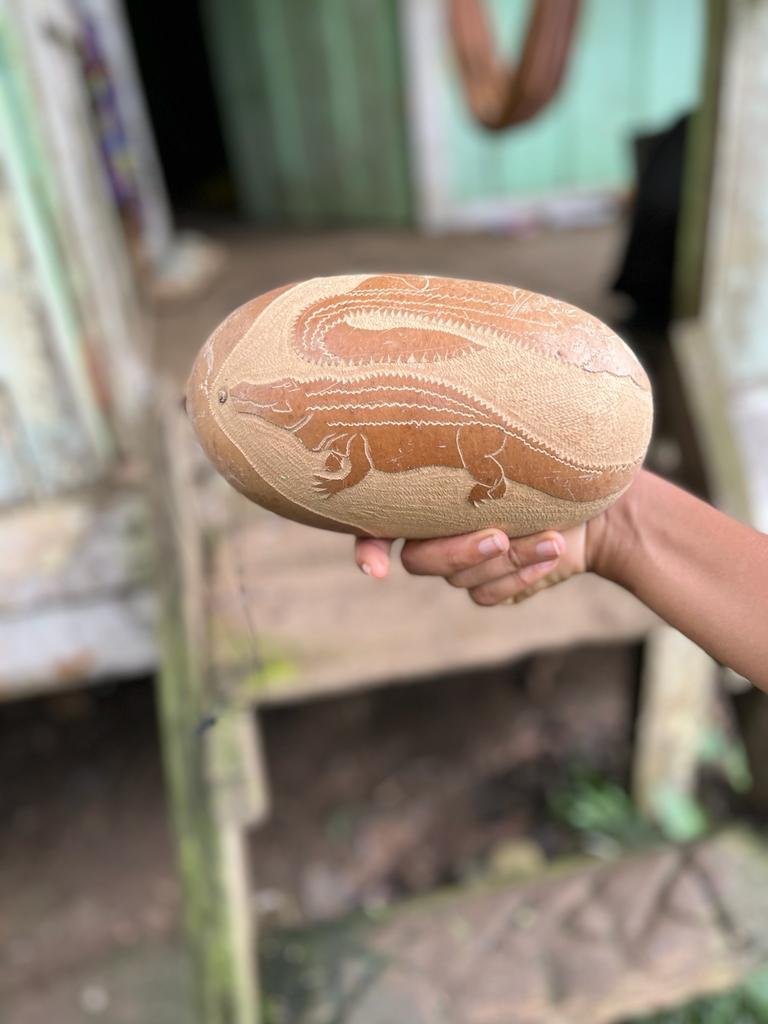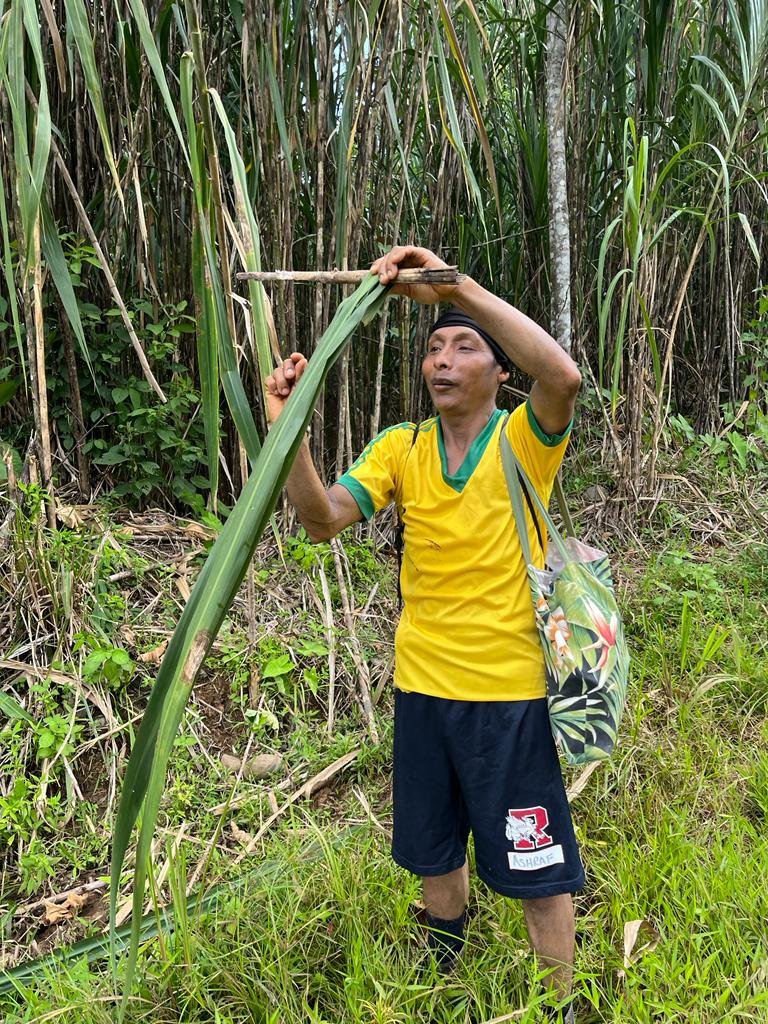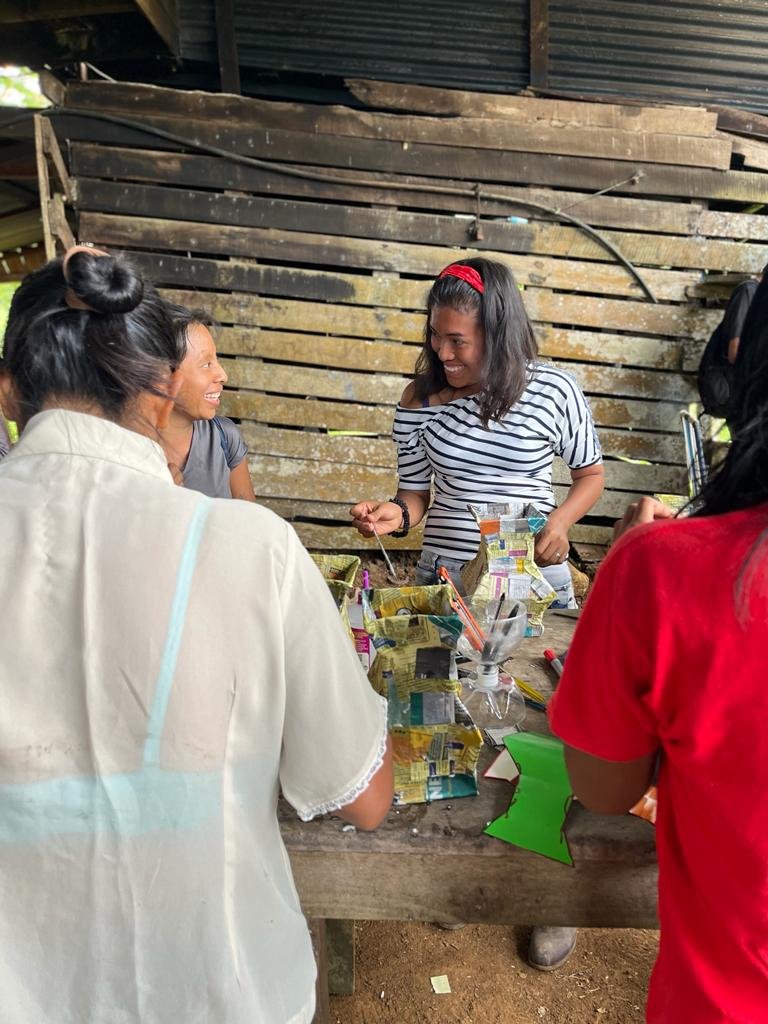Dos Ramas Cabécar Indigenous People
RR is currently working with a group of Cabécar Indigenous people in the community of Mokufitey and Tsirikbata in the Limon province of Costa Rica.






The Cabécar People
The Cabécar community are the largest Indigenous group in Costa Rica with a population of nearly 17,000 people. RR is working with a community within a mountain called Tsirikbata in the Limón province of Costa Rica.
These people have a culture rich in nature, community, arts, wisdom and ancient ways of being. They have open hearts, plant medicines, sustainable ways of being and so much more.
-
The story of this group of people begins with Abuela leaving Cartago, over 70 years ago, when she left for a better life and moved towards the mountains. Abuela arrived at the mountain with two children and from there, this group of Cabecar people began to populate this mountain.
Throughout time, this family has found ways to continue, to endure and to live with nature. Their resilience lies in their rituals that keep them supported to their worldview and their connection with nature. From their “danzas,” prayers, celebrations, connection to their love for sports, artisanal crafts, musical instruments and dreams for bringing in tourism to their community, they share their joy, their spirit and their hearts with the rest of the world.
-
The Cabécar community are the largest Indigenous group in Costa Rica with a population of nearly 17,000 people and are considered to be the most isolated. They have little opportunity to share their culture, sustain an economy, and develop social relationships resulting in poverty, isolation, and a threat to their culture. They have limited access to education, medical care, transportation and means of income.
-
The first evidence of human settlement in Costa Rica comes from around 10,000BC, these 12,000-year-old settlements are the oldest evidence of human life found in Central America. Today, only eight Indigenous groups exist in Costa Rica comprising about 100,000 people and 2.4% of the population. Mostly located in the Chirripo Mountains, the Cabécar people are very traditional and have preserved their culture of creating traditional art pieces for market. The poverty rate for Cabécar people is 94%, compared to 20% for the rest of Costa Rica.
Community Spotlight: Sergio
-
Sergio is well known in his community for his ability to create artisanal pieces and share them with others in Costa Rica
-
Sergio enjoys traveling to other Indigenous communities and events to showcase his art. Including his earrings, bracelets, masks at more.
Community Spotlight: Fridayansi
-
Fridayansi is our main coordinator. She loves to spend time with her daughter, draw and hang out with her pet turkey.
-
Fridayansi supports RR through story telling and sharing of different needs within her community. She connects and coordinates with members of Mokufitey so that we can serve their needs best.
Community Spotlight: Isaias
-
Isaias supports our coordination between the community members and the staff at Rise in Resiliency. He provides a critical bridge for our work.
-
Isaias enjoys creating art made out of Jicara. Jicara is a fruit/gourd that is found in their community. They enjoy depicting different animals and plants in their artwork.
-

Cabécar School
LOCAL COMMUNITY SCHOOL
The Tsirikbata School provides education on traditional subjects and cultural knowledge in their native tongue, Cabécar.
At this time, RR is supporting the rebuilding of their school, working for donations towards books and school supplies and bringing water to the school.
In the future, they hope to welcome tourists who wish to volunteer in projects that sustain the school.
-

Artisanal Crafts & Culture
INDIGENOUS CRAFTS, TOOLS & INSTRUMENTS
The Cabécar people in the Tsirikbata community make various arts crafts, bowls, woven bags, jewelry, drums and many other things.
Their culture is a part of all that they do, from how they build their homes to how they grow their food to how they walk 2-4 hours to reach their school, places to buy items and towns.
In the future, they hope to share their products and sell them to others locally and globally so that they may further sustain their living, while also sharing their culture with others.
-

Fútbol & Culture
SOCCER
The Cabécar people in this community love to play fútbol. They play in their boots, barefoot or, for a few, in soccer cleats.
They have built their own goal posts out of wood that are moveable. They hope to build up their soccer materials and in the future, invite tourists and locals to play soccer games with them in their community.
Make a donation to the Cabécar Indigenous Community at Dos Ramas.
“The Board of Education of the Tsirikbata School has the pleasure of greeting you and at the same time telling you that we have a new school that opened the code this year and the school is from a ranch, which works like the [school room] and one that serves as a dining room. , and that no service has been provided yet, for this reason we need support to make one or two new and stable, we are working on this to see where we can find funds to build the new school and of zinc, that is why we are looking for support for some entity to lend us a hand, we need tools to work and much more.” - Jairo, President of the Board of Education at Tsirikbata School
TSIRIKBATA SCHOOL
“We’re raising funds for Indigenous-led projects in cultural preservation, tourism and artisanal crafts within the Cabécar community at Dos Ramas. Together, in community, we identify ways to integrate both the ancient ways of being with the knowledge of today.”
— Anna Claybaugh, Founder & Director of RR













